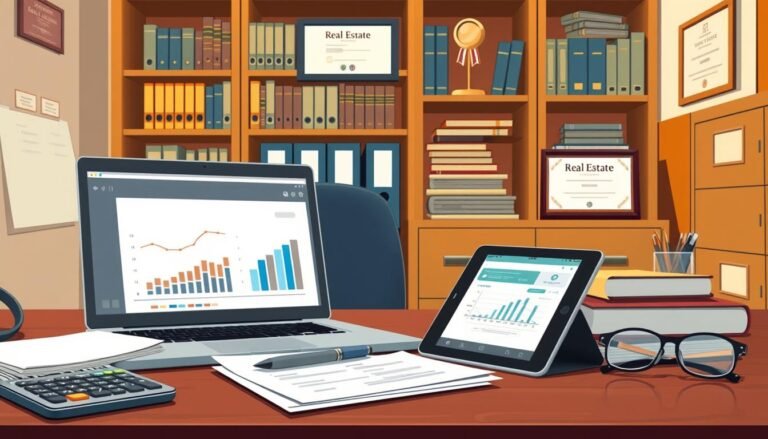Cost control in logistics and shipping
Did you know that logistics costs can take up to 50% of your product’s total cost? In today’s fast-paced market, businesses often overlook hidden expenses in their supply chains. These include fuel waste and inefficient routes. How can you cut these costs without sacrificing speed or customer satisfaction?
Cost control in logistics and shipping isn’t just about slashing expenses—it’s about making smart decisions that boost profitability. Rising fuel prices, driver shortages, and storage demands add pressure. But many companies still rely on outdated methods. With logistics cost management, you can turn these challenges into opportunities. This guide reveals actionable steps to reduce waste and improve efficiency.
Key Takeaways
- Logistics costs can represent 5-50% of a product’s total cost, making cost control critical.
- Data analysis tools like IoT and telematics directly reduce fuel use and delivery delays.
- Collaborating with partners on shared routes and resources lowers operational expenses.
- Real-time tracking prevents overstocking and stockouts, saving inventory costs.
- Effective cost control balances speed, accuracy, and customer satisfaction.
Understanding the Importance of Cost Control in Logistics and Shipping
Effective logistics cost management is key to staying competitive. Businesses often don’t realize how much logistics costs them—up to 10% of total revenue. Rising fuel prices and labor shortages can increase costs by double digits.
The Impact of Logistics Costs on Overall Business Profitability
Warehousing alone costs businesses €3–10 per unit monthly. Deadhead miles add 20–30% to transport expenses. Fuel surcharges and hidden costs like manual data entry can increase total expenses by over 100%.
For example, inefficient route planning wastes 15–20% of operational budgets. These numbers show why controlling supply chain expenses is crucial.
Common Cost Drivers in Modern Supply Chains
- Transportation: Fuel costs rise 12% annually
- Storage: Pallet storage averages €7.50/month
- Hidden fees: Returns handling adds €6–8 per parcel
- Labor: Driver shortages increase overtime pay by 25%
Autonomous trucks could cut these costs by 20% by 2025. But, current systems need immediate attention to variables like packaging inefficiencies and inventory turnover rates.
Why Proactive Cost Management Matters
Proactive logistics cost reduction strategies like predictive analytics and route optimization prevent last-minute cost spikes. Companies using real-time tracking cut variable expenses by 18%.
As Locus CEO Nishith Rastogi notes, balancing efficiency and resource use ensures sustained profitability. Embracing tech-driven supply chain cost management today builds resilience against future disruptions.
Current Challenges in Logistics Cost Management
Today’s logistics cost management is tough, even for experts. Fuel prices, driver shortages, and e-commerce needs put a strain on budgets. They also demand quicker delivery times. This makes cost control in logistics and shipping harder, as companies try to balance speed and cost.
- Fluctuating fuel costs that spike transportation budgets
- Warehouse inefficiencies from overstocked or understocked inventory
- Technological gaps slowing automation adoption
- Global disruptions like port strikes or geopolitical conflicts
| Challenge | Impact |
|---|---|
| Driver Shortages | Increases labor costs by 15–20% (2023 UPS Report) |
| E-commerce Demands | Raises last-mile delivery expenses by 30% for retailers |
| Regulatory Compliance | Requires ongoing training and audits to avoid fines |
| Tech Implementation | ERP system costs delay ROI by 12–18 months |
Big names like Amazon and Walmart deal with these issues every day. They must find ways to meet customer needs while keeping costs down. The next part will look at how checking expenses can reveal savings in these challenges.
Assessing Your Current Logistics Expenditure
Effective supply chain cost management begins with knowing where money goes. Start by checking every expense related to logistics, like fuel and storage. This helps find ways to reduce logistics costs.
- Track all invoices, contracts, and payment records for 12–24 months.
- Categorize costs into departments (warehousing, transportation, administration).
- Validate data accuracy through cross-department reviews.
Identifying Hidden Costs in Your Supply Chain
Hidden costs, like detention fees and obsolete inventory, can be 15–30% of total expenses. Use process mapping to find:
- Expedited shipping ripple effects (delays, storage overruns)
- Undervalued administrative labor hours
- Undetected waste in returns handling
Setting Benchmark Metrics for Performance
Nishith Rastogi suggests matching KPIs with business goals. Important metrics include:
| Metric | Description | Goal |
|---|---|---|
| Perfect order rate | Percentage of orders fulfilled without errors | ≥95% |
| Inventory turnover | Cost of goods sold divided by average inventory | Industry average: 8–12x/year |
| Cost per order | Total logistics spend divided by order volume | Reduce by 10% annually |
Use benchmarks to compare with others and set supply chain expense control goals. Regular audits and KPI tracking help keep savings real and ongoing.
Transportation Cost Savings Strategies
Effective freight cost control begins with smart choices. Choosing a carrier isn’t just about the price. It’s also about reliability and service quality. Companies like Walmart save money by using both rail and trucking.
Regularly reviewing contracts and offering incentives helps keep carriers on track. This approach avoids short-term savings that might harm quality in the long run.
- Evaluate carriers on service, not just rates.
- Use shipping cost optimization tools to track performance metrics.
- Negotiate contracts with performance-based incentives.
Route planning is key to transportation cost savings. Amazon uses AI to cut costs by 10-30% with real-time traffic and weather data. Dynamic routing and fuel-efficient vehicles also save money and reduce emissions.
Tools like GPS and IoT devices help manage fleets better. They ensure drivers take the best routes.
Consolidating shipments can save up to 20% of costs, according to McKinsey. Merging LTL shipments into full loads and using cross-docking reduce storage time. Partnerships, like P&G’s with XPO Logistics, share resources.
- Combine shipments to fill truck space fully.
- Use transload facilities to merge regional deliveries.
- Collaborate with other businesses for shared freight.
By choosing carriers wisely, using technology for routes, and consolidating shipments, businesses can save money. This approach keeps costs down without sacrificing delivery speed or quality.
Warehouse Cost Efficiency Techniques
Warehouses spend 20-30% of their budget on logistics. Making warehouse cost efficiency better can cut logistics cost reduction. This frees up money for growth. Begin by checking how space is used and how fast items move.
- Adopting vertical storage racks to utilize cubic space fully
- Implementing real-time inventory tracking systems
- Using AI-driven slotting algorithms to optimize product placement
| Strategy | Impact |
|---|---|
| Dynamic slotting systems | Cuts travel time by up to 40% |
| Automated guided vehicles (AGVs) | Reduces labor hours by 25-30% |
| Smart lighting sensors | Cuts energy use by 15-20% |
| Lean warehouse training programs | Improves process compliance by 35% |
Companies like Flowspace use a 3PL network to cut warehousing costs by 18-22%. They share space to save money. Automation and training work together well. For example, barcode scanners reduce errors by 60% without slowing down.
Regular upkeep for conveyor systems and forklifts also saves money. By using these strategies, warehouses help lower logistics cost reduction. They do this without losing speed or accuracy in delivery.
Inventory Management for Cost Reduction
Inventory costs can be 15–30% of the total value each year. This makes managing it key to supply chain expense control. To start, balance stock levels to avoid too much while still meeting demand. Tools like Economic Order Quantity (EOQ) and Just-in-Time (JIT) help match inventory with needs, cutting waste and saving money.
- Implement vendor-managed inventory (VMI) to shift storage costs to suppliers, cutting warehouse expenses.
- Use FSN analysis to categorize fast, slow, and non-moving items, focusing resources on high-turnover products.
- Adopt cross-docking to bypass storage, reducing warehousing costs by up to 20% through direct product transfer.
Technology like perpetual inventory systems and AI-driven forecasting make tracking more accurate. This means less excess stock. Cutting logistics cost begins with supply chain cost management practices like consignment and centralized purchasing. These methods reduce waste, streamline processes, and increase cash flow by up to 30%.
By using these strategies, businesses can cut inventory costs by 15–30% without hurting service levels. Optimizing supply chain expense control also means setting exact reorder points and using dropshipping for items in low demand. This balance ensures products are available while avoiding too much stock. Companies that reduce logistics cost see faster cash flow and better meet customer needs.
Leveraging Technology for Supply Chain Expense Control
Technology changes logistics cost management by making data useful for saving money. Modern tools make smart choices to cut waste and improve accuracy. For instance, Transport Management Systems (TMS) like those by Nishith Rastogi help pick the best carriers and track environmental impact.
Warehouse automation is key in saving money. IoT sensors keep track of inventory in real time. Robotics sort and store items quicker than people. Cloud-based platforms bring together data from suppliers, warehouses, and delivery routes. Here’s how these technologies help:
| Technology | Benefit | Use Case |
|---|---|---|
| AI Forecasting | Reduces overstock by 20-35% through demand predictions | Adjusts inventory levels for seasonal peaks |
| Automated Storage Systems | Cuts labor costs by up to 40% | AGVs moving pallets in e-commerce warehouses |
| Blockchain | Eliminates paperwork delays and fraud | Securely tracks pharmaceutical shipments |
Cloud-based supply chain expense control tools make audits and compliance easier. Route optimization software reduces fuel use. Drones cut last-mile delivery costs by 30%. Begin with small steps: try AI forecasting or IoT sensors in one warehouse. Investing in tech that grows with your needs helps save money over time without breaking the bank.
Freight Cost Control Through Better Negotiation
Effective negotiation with carriers is key to freight cost control today. By understanding carrier pricing and building strong partnerships, businesses can save on transportation costs. Since transportation makes up 60% of supply chain costs, good negotiations can greatly reduce shipping expenses.
Carrier pricing changes based on the type of service. It includes fuel surcharges, extra fees, and minimum charges. For instance, saving money comes from matching shipment size with pricing rules. Here’s a breakdown of pricing:
| Mode | Key Factors | Negotiation Leverage |
|---|---|---|
| Truckload | Volume, distance | Bulk discounts, fixed agreements |
| LTL | Weight, dimensions | Packaging adjustments, shipment consolidation |
| Parcel | Zone-based pricing | Optimized routing, dimensional weight compliance |
Good RFPs help control freight costs. Include details about shipments, service needs, and performance goals. Look at more than just price—check carrier tech, financial health, and service reach. Tip: Use data to find hidden savings.
- Focus on long-term partnerships rather than short-term rates
- Request incentives like fuel rebates or accessorial waivers
- Collaborate on process improvements like dedicated lanes or shared-risk contracts
Companies using these tactics see 5-15% cost cuts. Regular contract checks and flexible pricing clauses help save more on transportation costs.
Implementing Supply Chain Visibility for Cost Management
Real-time visibility changes how companies manage logistics costs. Nishith Rastogi says old systems cause inventory mistakes. Now, tools like IoT sensors and telematics track things accurately, saving money in supply chain expense control. 
Real-Time Tracking and Its Cost Benefits
IoT devices and telematics watch over fleets and warehouses, giving insights. Orkestra’s platform links ERP systems to find hidden inefficiencies. The main advantages are:
- Reduced emergency shipments by 25% through accurate demand forecasts
- Increased container utilization by 18% via optimized loading
- Penalty reduction: Real-time tracking cuts detention fees by 40%
| Metric | Traditional Approach | Real-Time Tracking |
|---|---|---|
| Inventory Accuracy | Estimates with 15% error margin | 98% accuracy through IoT sensors |
| Cost Savings | 20% hidden expenses | Identifies 70% of these costs |
Analytics-Driven Decision Making
Data analytics turns metrics into cost-saving actions. Descriptive analytics finds past overspending, while predictive models forecast issues. Prescriptive analytics offers solutions like route changes or supplier shifts. For example, Orkestra’s clients cut freight costs 12% by using these methods.
Visual dashboards make decisions easier, allowing teams to act quickly. Companies using real-time analytics save 19% on logistics costs each year. Start small—track high-value shipments first, then expand as systems align.
Outsourcing vs. In-house Logistics: Cost Considerations
Companies looking to cut logistics costs often wonder if they should handle logistics themselves or work with third-party providers. Both options have their benefits for cost control in logistics and shipping. The best choice depends on what fits your business goals.
| Aspect | Outsourcing (3PL) | In-House |
|---|---|---|
| Cost Structure | Variable costs (pay-as-you-go) | High fixed costs (warehouses, fleets) |
| Scalability | Quickly scale with demand | Limited flexibility during demand shifts |
| Technology | Access to advanced tech via 3PLs | Requires ongoing tech investments |
| Risk | Shared risk with service-level agreements | Full responsibility for operational risks |
When deciding, consider these important factors:
- Business size and growth projections
- Market demand volatility
- Budget for tech infrastructure
- Desired control over customer experience
Hybrid models, combining outsourcing and in-house functions, are becoming more popular. For example, a company might outsource warehousing but keep fleet management in-house. This mix aims to balance cost savings with control over operations. Remember, to manage cost control in logistics and shipping well, look at the total cost, not just initial expenses. Choose the model that supports your long-term goals and maximizes logistics cost reduction chances.
Sustainable Practices That Reduce Logistics Expenses
Sustainable practices are good for the planet and can save money. Companies that go green often see a drop in logistics cost reduction. This makes shipping costs more manageable.
Green Initiatives That Improve Bottom Line
Using electric or hybrid trucks can save 30-40% on fuel costs. Tax breaks can also lower the initial cost. Route optimization software can save up to 15% on fuel and emissions.
Choosing rail or water transport can cut fuel use and emissions. This lowers costs by 20-25% per mile. These steps help save money while being eco-friendly.
- Electric fleets with government rebates reduce long-term fuel expenses
- Rail/water shipping cuts fuel use and emissions, reducing operational costs
- Route optimization tools reduce idle time and fuel waste
Packaging Optimization for Cost and Environmental Impact
Using lightweight materials like recyclable plastics can save 10-30% on shipping costs. Custom boxes reduce empty space, saving on shipping fees. Reusable containers can save up to 25% on material costs.
Sustainable packaging also lowers waste disposal fees and boosts brand image.
- Biodegradable materials cut waste costs and meet eco-certifications
- Modular packaging designs reduce storage and handling labor
- Lean packaging reduces transportation fuel use and carbon emissions
Companies like IKEA and Uniqlo have cut logistics costs by 18-22% with green packaging. These strategies help increase profits while supporting the environment.
International Shipping Cost Optimization
Global shipping needs smart ways to save money without losing speed. Shipping cost optimization begins with using containers wisely. Companies like Walmart save big by combining shipments into full truckloads or containers.
Using lighter packaging and precise volume calculations makes every inch count. This ensures every bit of space is used efficiently.
Incoterms like DAP or CIF can change who pays for duties, affecting freight cost control. McKinsey suggests tracking price changes in real time to get better rates. Working with carriers that offer all-inclusive contracts can also cut down on hidden fees.
For example, UPS saved fuel by avoiding left turns. This tactic can be applied to route planning for better efficiency.
- Optimize customs clearance by taxes upfront to avoid delays
- Use technology like TMS systems to automate carrier comparisons
- Join foreign trade zones to defer import duties
Deloitte’s $1.5B case study shows how analytics can cut costs. Always check insurance policies to avoid over-insuring, which adds unnecessary costs. By matching packaging size with dimensional weight rules, companies can reduce what they’re charged for.
These steps turn international logistics into a way to make money instead of just spending it.
Measuring the Success of Your Cost Control Initiatives
It’s crucial to track results to see if cost-saving efforts are working. Experts like Nishith Rastogi say logistics cost management needs clear metrics. This helps measure outcomes and make needed changes. Here’s how to do it well.
Key Performance Indicators to Track
Start by setting up metrics that match your goals. Look at financial KPIs like total logistics cost as a percentage of sales and cost per order. Also, check operational KPIs such as perfect order rate and inventory accuracy to keep service quality high.
Productivity metrics like units per labor hour show where you can get better. And customer impact KPIs, like on-time delivery rates, help avoid service trade-offs.
Continuous Improvement Methodologies
Use Lean’s value stream mapping to spot waste. Six Sigma’s DMAIC process (Define, Measure, Analyze, Improve, Control) helps solve problems. Cross-functional teams can tackle big issues, and regular audits keep things on track.
Automate reporting to keep leaders informed without overloading teams.
- Lean techniques: Root cause analysis for waste elimination
- Process optimization: DMAIC methodology for defect reduction
- Team collaboration: Cross-functional projects for systemic changes
Regular reviews with sensitivity analysis and break-even assessments keep strategies on track. Supply chain expense control does best when improvement is a regular part of operations, not just a one-time fix.
Conclusion: Building a Culture of Cost Awareness in Your Logistics Operations
Creating a culture of cost awareness is key to mastering logistics cost management. Companies like Toyota use just-in-time practices to reduce waste and improve resilience. Leaders must support cost control in logistics and shipping by linking goals to daily decisions.
Training teams on cost-saving tools, like ERP systems, helps everyone see how they impact expenses. This way, everyone understands their role in keeping costs down.
Encourage teamwork between sales, operations, and finance to align goals. Reward teams for suggesting ways to save, like better routes or supplier deals. Open communication about cost goals builds trust.
Use real-time data analytics to find savings opportunities. Cross-departmental incentives make everyone accountable.
Begin with a plan: audit costs, set targets, and train staff. Companies that optimize their supply chains save 15% and cut inventory by half. This shows real results.
Regularly check progress with KPIs like inventory turnover and cash-to-cash cycles. A culture focused on cost awareness leads to lasting efficiency and profit.
Source Links
- Balancing Efficiency And Cost Control: Key Tactics For Logistics – https://www.forbes.com/councils/forbesbusinesscouncil/2024/02/22/balancing-efficiency-and-cost-control-key-tactics-for-logistics/
- How to Control Costs in Your Supply Chain – PLS Logistic Services – https://www.plslogistics.com/blog/how-to-control-costs-in-your-supply-chain/
- Logistics Costs Explained | Waredock – https://www.waredock.com/magazine/logistics-costs-explained/
- Chapter 3 – The Cost of Logistics – https://ecampusontario.pressbooks.pub/logistics001oerfc/chapter/chapter-3-the-cost-of-logistics/
- Key Challenges in Logistics Management: Strategies to Overcome Them – Inbound Logistics – https://www.inboundlogistics.com/articles/logistics-management-challenges/
- Improving Cost Control Challenges in Supply Chain Management – https://www.apu.apus.edu/area-of-study/business-and-management/resources/improving-cost-control-challenges-in-supply-chain-management/
- Logistics Cost Reduction: Strategies, Benefits, and Challenges – KODIS – https://kodistransportation.com/logistics/cost-reduction
- Evaluating Transportation Costs: Optimize Your Logistics with These Strategies – Versa Cloud ERP – Blog – https://www.versaclouderp.com/blog/evaluating-transportation-costs-optimize-your-logistics-with-these-strategies/
- What Are Logistics Costs, And How To Optimize And Reduce Them? | GoRamp – https://www.goramp.com/blog/logistics-costs
- How to Get Better Control Over Your Logistics Costs | Blume Global – https://www.blumeglobal.com/learning/control-over-logistics-costs/
- 6 Best Practices to Reduce Transportation Costs in Logistics – https://www.invensis.net/blog/strategies-to-reduce-logistics-transportation-costs
- 10 Ways To Reduce Transportation Costs In Logistics – https://www.gocomet.com/blog/6-ways-to-reduce-transportation-costs/
- In the fast-paced world of warehousing and logistics, managing costs effectively is crucial for maintaining profitability and competitiveness. From co… – https://eoxs.com/new_blog/smart-spending-techniques-for-warehouse-cost-control/
- How To Reduce Logistics Costs: 10 Strategies That Work In 2025 – https://flow.space/blog/reducing-supply-chain-and-logistics-costs/
- Strategies to reduce costs in logistics and supply chain management – https://www.orkestrascs.com/blogs/strategies-to-reduce-logistics-and-supply-chain-costs
- 16 Cost Reduction Strategies in Inventory Management – Unleashed Software – https://www.unleashedsoftware.com/blog/16-cost-reduction-strategies-in-inventory-management/
- Inventory Management Techniques And Their Benefits – Inbound Logistics – https://www.inboundlogistics.com/articles/inventory-management-techniques/
- Cost Control in Transportation and Logistics: Optimizing Supply Chains – https://www.ebr.consulting/blog/cost-control-in-transportation-and-logistics–optimizing-supply-chains
- Guide To Cost Reduction In Supply Chain Management – LSI – https://lsiwins.com/cost-reduction-in-supply-chain-management/
- Leveraging Technology and Automation in Supply Chain Management – Cataligent – https://cataligent.in/blog/leveraging-technology-and-automation-in-supply-chain-management/
- Leveraging Technology, Automation, and Robotics to Enhance Supply Chain Operations – https://www.advatix.com/blog/leveraging-technology-automation-and-robotics-to-enhance-supply-chain-operations/
- 7 Steps to Achieve Better Freight Cost Optimization – https://www.lojistic.com/blog/how-to-achieve-freight-cost-optimization
- Top 5 Freight Cost-Saving Techniques You Should Know » TOP Worldwide – https://topworldwide.com/top-5-freight-costs-saving-techniques-you-should-know/
- Improving cost visibility in your supply chain – https://www.orkestrascs.com/blogs/cost-visibility-in-your-supply-chain-seeing-how-you-can-save
- Supply Chain Visibility: A Key Strategy for Cost Optimization – https://southfloridareporter.com/supply-chain-visibility-a-key-strategy-for-cost-optimization/
- Outsourcing vs In-house Logistics: Cost Considerations and Best Practices – https://www.unityscm.com/blog/outsourcing-vs-in-house-logistics-cost-considerations-and-best-practices
- Logistics Management: Outsourcing Vs. In-House – https://www.forbes.com/councils/forbesbusinessdevelopmentcouncil/2024/07/23/logistics-management-outsourcing-vs-in-house/
- In-House vs. Outsourced Logistics | What’s the Difference? – https://expressitdelivery.com/blog/in-house-vs-outsourced-logistics/
- Green Logistics: Sustainable Practices for Cost Reduction and Environmental Impact – https://www.unityscm.com/blog/green-logistics-sustainable-practices-for-cost-reduction-and-environmental-impact
- How Sustainable Practices Can Reduce Supply Chain Costs – https://www.paramountglobal.com/knowledge/how-sustainable-packaging-reduces-supply-chain-costs/
- 5 Effective Ways to Reduce Shipping Costs for 2025 – https://www.invensis.net/blog/how-to-reduce-shipping-costs
- The better way to reduce shipping costs: Model and optimize logistics – https://www.frontsys.com/news/how-to-optimize-logistics-to-reduce-shipping-costs
- Logistics Cost Optimization: Drive Efficiency – Sheer Logistics – https://sheerlogistics.com/blog/logistics-cost-optimization-drive-efficiency/
- 5 Successful Logistics Cost Reduction Strategies for Your Business – https://cowtownexpress.com/blog/successful-logistics-cost-reduction-strategies-for-your-business
- How can you measure logistics cost reduction strategy effectiveness? – https://www.linkedin.com/advice/3/how-can-you-measure-logistics-cost-reduction
- 5 Proven Strategies For Reducing Supply Chain Costs – https://www.invensis.net/blog/cost-reduction-strategies-in-supply-chain
- PDF – https://es.eragroup.com/wp-content/uploads/2018/05/Creating-a-Culture-of-Cost-Optimization.pdf
- Cost Control: Definition, Techniques, Methods, Strategies & Examples – https://happay.com/blog/cost-control/








